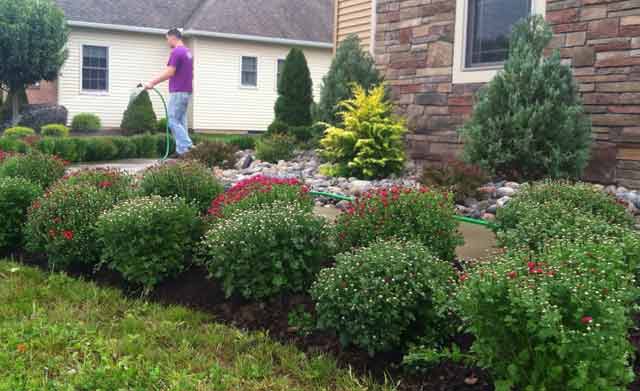Once you have purchased a home, one of the most important things that you have to take care of first is the septic system. Not all septic systems are the same. The design largely depends on how you would want it to work for you and for your surrounding environment.
The septic drain field’s purpose is to keep the waste underground away from humans and the surrounding environment. A septic drain field per se, is a system under the surface that recycles wastewater. It makes use of bacteria to digest the solid waste and return the treated wastewater back to the soil. Usually, about three or four trenches comprise the drain field. These structures that are embedded eighteen to twenty four inches below the ground along with a pipe that is perforated are then covered with twelve to eighteen inches of dumped gravel, which is then covered by about six inches of soil.
If your drain field is well-designed and installed, it will be able to distribute and treat the wastewater to a large area and later, to the subsurface soils below it. This is accomplished by the distribution box and the drain field lines themselves. The surrounding soil then filters the wastewater with the anaerobic bacteria. Any diseases in the wastewater will be neutralized by the bacteria that are present in the drain field. To achieve the ideal septic drain field, the area in which it will be built in should be well assessed and well calculated by professionals. This is to make sure that the space is appropriate and the percolation rate of the soil is ideal.
You look around your yard now and think of the perfect septic drain field design that’s appropriate. Maybe the following types of septic field designs can help you with your decision:
- Gravel-lined/Conventional Drain field
The conventional design of a drain field is comprised of beds or trenches that are lined with coarse sand or gravel and are buried or embedded one to three feet underground. The perforated drain tiles or pipes are the ones that distribute the wastewater over the gravel layer before it is absorbed by the soil. Here, the gravel layer helps support the drain field, stores the wastewater for peak flow times, separates the pipes from the soil, and distributes the effluent. This drain field design is inexpensive and always available. But only washed gravel is used because the particulates will clog the surface of infiltration and this will eventually become a problem. One of the drawbacks of this design is that there is a high possibility that the soil will become compacted because of the accumulated weight of the gravel. If the soil is not that loose as it was before, then the wastewater will not percolate through it.
- Gravel-less Drain field
This design is known to be affordable and simple. The gravel-less drain field is used in places that consider sewers impractical. The same flow as in a regular septic system happens in a gravel-less drain field. The only difference is that there is no use of gravel in the beds or trenches. In place of gravel, they use foam chips, glass, plastic, shale, expanded clay, polystyrene, fiber membrane, sand, and rubber. There alternatives do the same work as gravel such as propping up the pipes to separate them from the soil and prevent clogging , dispersing the effluent, storing the effluent until it can be absorbed by the soil, and supporting the walls of the trenches. There are variations of the gravel-less system wherein slitted or wrapped pipes that are corrugated are used instead of the mentioned alternatives. The corrugated pipes are made of plastic and have a diameter of eight to ten inches. They are also covered with nylon or geotextile fabric. The effluent is filtered through the fabric. In most areas, the gravel-less is much more preferred because it is more practical, easy to handle, dust-free, simple in maintenance, and easy on the soil.
- Chamber system
This design is easy to install and is often known as leaching chambers. The chambers here are comprised of pipes that have open bottoms and are usually made of high-density plastic, brick, or fiberglass. These chambers are in the shape of a dome, fifteen to forty inches in width. They are made of light-weight but strong material. The panels interlock with one another and can be secured with fasteners and screws. Native soil or any porous material suggested is placed around the chambers to add strong support. Each of the chambers has a so-called inspection port for the monitoring of the water levels. The effluent is transported through a 4-inch pipe. The pipes have geotextile fabric wrapped around them. Then, the wastewater is treated by the surrounding soil.
Whatever design you prefer, you should still maintain your septic system drain fields very well. Learn about the system you have and research what best methods can be applied to your system to keep it running in an optimal state.

